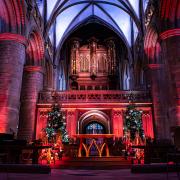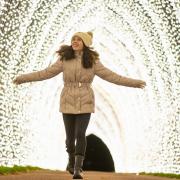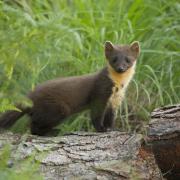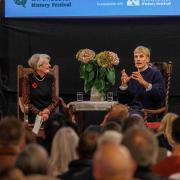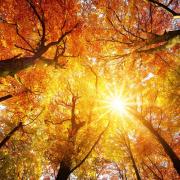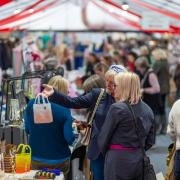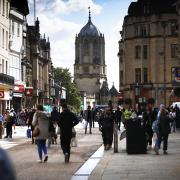Do you know your Bellis perennis from your Digitalis purpurea? Does Papaver rhoeas ring any bells? And would you recognise Convallaria majalis if you tripped over it? Probably not. I’m no Latin scholar but I’m learning quickly that all those evocative botanical names translate to some of England’s loveliest wildflowers. Well done if you identified them as daisies, foxgloves, the field poppy and Lily of the Valley.
I feel very fortunate to live in a part of the world which is renowned for its remarkable variety and sheer numbers of wildflowers. For millions of people around the globe, just thinking about the Cotswolds conjures up images of bluebell woods, wide verdant valleys and beautiful carpets of meadow buttercups. The Cotswold Farm Park sits amid beautiful limestone grassland which not only provides a home to an array of mammals, birds and butterflies, but also an abundance of fabulous flora. In fact, it’s thought the area around my home supports 100 species of wildflowers and grasses. There’s everything from cowslips and early purple orchids in spring, to harebells, kidney vetch and field scabious in summer. Add to that bee orchids, green-winged orchids, common restharrow, viper’s bugloss and dozens of other wildflowers, and it’s no wonder we’re the envy of nature-lovers the world over.
Some examples are rarer than others, but the prize for Gloucestershire’s rarest wildflower goes to the famous Badgeworth buttercup. In fact, the adder’s-tongue spearwort, to give this exceptional wetland plant its formal name, is the scarcest flower in Britain. It’s only found in two places in the entire country; Badgeworth Nature Reserve, near Cheltenham, and Inglestone Common, near Wickwar. It’s so precious that the Badgeworth site is the only place to see it when the reserve is open to the public on just one day every year. But of all the plants that grace our local landscape, there’s one which has found a particular place in my heart. The Cotswold pennycress is so small and delicate it’s easy to miss unless you know what you’re looking at. The clue is in the name. The grey-green leaves really do resemble garden cress but the joy comes from the flowers; as they ripen, little heart-shaped seed pods form below the petals. It’s not just its appealing appearance that’s special to me; as its name suggests, it’s only found in the Cotswolds and even then it grows in just a handful of places. I’m very pleased to say that one of those places is a secluded part of our tenanted farm.
The transition taking place in British farming, and the shift from EU subsidies to UK support for agriculture, means a big push to create new wildlife ‘corridors’ and flower-rich meadows in England, which can only make our native wildflower species more familiar to the public. That’s very much on my mind this month as I launch a new venture.
Adam Henson’s Wildscape is a range of native wildflower seed mixes inspired by the boost these blooms and grasses give to the biodiversity I’ve seen for myself around the farm. One pack benefits soil health, another promotes pond life, there’s a mix that’s perfect for attracting pollinators and one with quick-to-bloom flower species that have proved popular with farmers like me. I’m so proud of the partnership with Wildscape, which I’m hoping will encourage a new appreciation of Mother Nature and perhaps help everyone realise that we can all do our bit to help wildflowers thrive.
Here’s to a rainbow of vibrant plant life when the Cotswolds bursts into full bloom.
Contact @AdamHenson
01451 850307;
cotswoldfarmpark.co.uk






